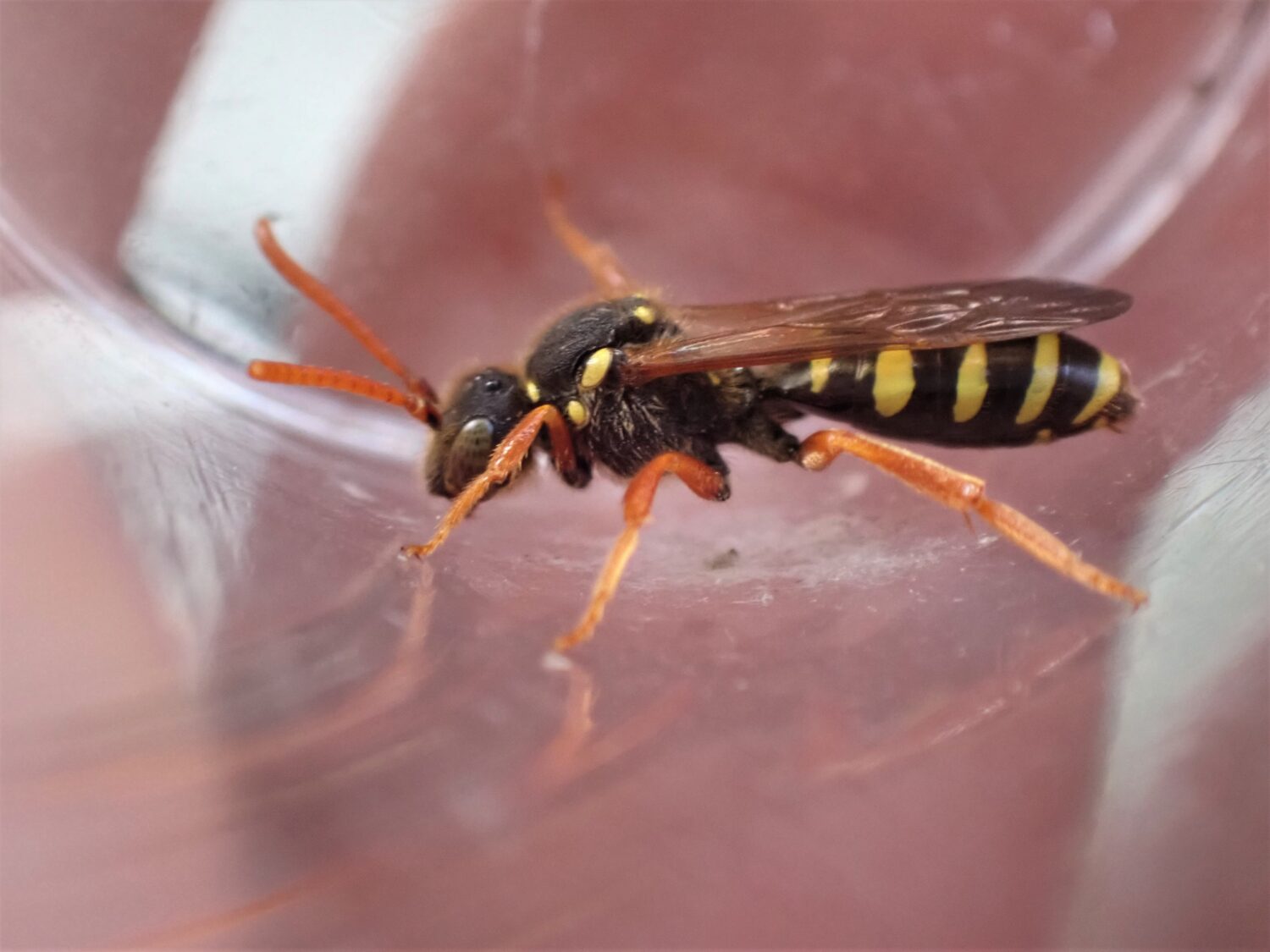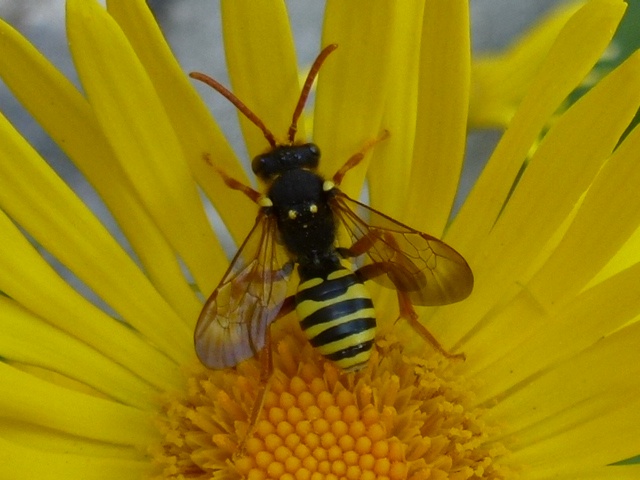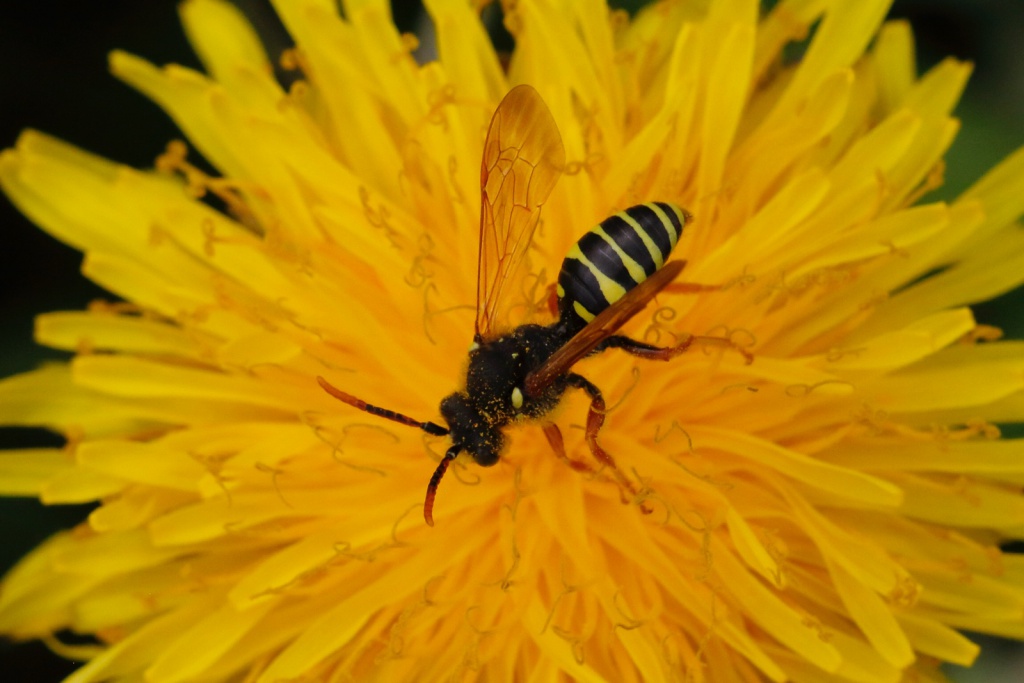Wasp-like with warning colouration, Gooden’s Nomad Bee lays its eggs inside Buffish Mining Bee nests.
Fast facts
- Common name
- Gooden's Nomad Bee
- Scientific name
- Nomada goodeniana
- Bee group
- A species of nomad bee (genus Nomada)
- When to see it
- April – June
Description
One of the largest and most common nomad bees, Gooden’s Nomad Bee can be found scheming around nest sites of Buffish Mining Bees.
Identification
Wasp-like, Gooden’s Nomad Bee has bright yellow and black stripes on its abdomen with orange antennae and legs. It has yellow spots at its wing bases and often a pair of yellow spots at the bottom of its thorax. Males have black markings on their antennae. As cleptoparasitic bees do not collect pollen, Gooden’s Nomad Bee has sparse hair. It looks similar to Marsham’s Nomad Bee but this species has orange spots at its wing bases.
Ecology
A cleptoparasitic bee, this nomad bee lays its eggs inside the nest of its host species: the Buffish Mining Bee. You will most likely see this bee at nest sites, waiting for the opportune time to sneak into unoccupied nests.
Regional distribution
One of the more widespread nomad bees in the region, it can be found where there are good populations of its host species.

Gooden’s Nomad Bee © James Common

